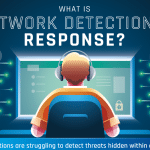Half of enterprises have publicly exposed SaaS assets

A new report finds that 50 percent of enterprises and 75 percent of mid-sized organizations have exposed public SaaS assets.
The report from security platform DoControl shows that large and medium companies have an average of 5.5 million and 1.5 million assets stored in SaaS applications respectively, illustrating the challenge IT and SecOps teams face daily in securing the intellectual property those assets contain.
Over 30 percent of mobile users encounter phishing attacks

According to data from Lookout, 2022 has seen the highest percentage of mobile phishing encounter rates ever, with an average of more than 30 percent of personal and enterprise users exposed to these attacks every quarter.
Since 2021, mobile phishing encounter rates have increased by around 10 percent for enterprise devices and more than 20 percent for personal devices.
Welcome to Twitter, who are you again?

If you've visited Twitter this morning you may have found that the platform appears to have forgotten that you exist.
Users around the world are being presented with a friendly 'Welcome to Twitter' message urging them to find some people to follow, despite having been on Twitter for years and already following hundreds of people.
Is it worth paying for an enterprise browser? [Q&A]

Why would you pay for a browser when all of the popular ones are available for free? If you're an enterprise it could be because a paid browser can address some key problems.
We spoke to CEO and co-founder of enterprise browser specialist Island, Mike Fey, to find out more about this category and what benefits it can offer.
Known vulnerabilities pose the biggest threat

Known vulnerabilities for which patches have already been made available are the primary vehicle for cyberattacks, according to a report released today by Tenable.
The Tenable Research team analyzed cybersecurity events, vulnerabilities and trends throughout 2022, including 1,335 data breach incidents publicly disclosed between November 2021 and October 2022.
88 percent of organizations have suffered cyber breaches in the last two years

A new survey of 300 CIOs, CISOs, and security executives from enterprises across Europe and the USA shows that 88 percent of organizations admit to being compromised by a cyber incident over the past two years.
The study from Pentera reveals that this is despite organizations having an average of almost 44 security solutions in place.
Threat actors move beyond ransomware to exploit new (and old) techniques

Cybercrime actors are shifting away from ransomware to new, innovative techniques, according to the latest CrowdStrike Global Threat Report released today.
The report shows 71 percent of attacks detected in the last year were malware-free (up from 62 percent in 2021) and interactive intrusions (hands on keyboard activity) increased 50 percent in 2022. This shows how sophisticated human adversaries are increasingly looking to evade antivirus protection and outsmart machine-only defenses.
The challenges of network detection and response

Even as we've seen a shift towards remote working, networks remain the part of an organization that are most at risk from cyber attacks.
In a new infographic LiveAction looks at evolving network security challenges and how the right Network Detection and Response (NDR) solution can be used to tackle them.
Ethical web scraping and data rights [Q&A]

Web scraping, automatically harvesting and extracting data from websites, can be a useful tool for businesses to learn about their customers.
But it's easy to fall into the trap of harvesting data just because it's there, leading to information overload not to mention privacy concerns for the consumer. To find out more about web scraping and how it can be used in an ethical way we spoke to founder and CEO of Rayobyte, Neil Emeigh.
61 percent of Americans rely on free antivirus programs

A new report on the antivirus market from Security.org reveals that almost three-quarters of Americans still strongly believe computers need antivirus to protect their devices and 61 percent are relying on free options like Microsoft Defender.
The number relying on free solutions has held steady, down only one point since 2021. Interestingly, only eight percent of free antivirus users have experienced a breakthrough virus in the past year, compared to 10 percent of paid users.
Why SBOMs have become a vital element of supply chain risk management [Q&A]

In recent years, the software bill of materials (SBOM) has become a key element of software security and software supply chain risk management.
We spoke to Tim Mackey, head of software supply chain risk strategy at Synopsys to find out more about the benefits and challenges of SBOMs.
Kubernetes market matures as optimization and control of costs become key

A new survey from Pepperdata of 800 executives and senior ITOps and DevOps professionals across major industries finds the Kubernetes market is maturing, the number of clusters that are being deployed has grown to six to ten per organization.
The variety and types of workloads is increasing too, including data ingestion, cleansing, and analytics, databases, and artificial intelligence and machine learning.
Business data at risk from oversharing

Sharing is caring, as the saying goes, but when it comes to business data oversharing is a big problem. A new report from Concentric AI shows the number of overshared files rose 60 percent in 2022 compared to 2021.
Largely this is down to the impact of hybrid remote work, cloud migration and information sprawl across on-premises and cloud data, as well as email and messaging environments on data security.
WithSecure creates an 'undo button' for ransomware

Ransomware attacks continue to plague organizations and can have an effect beyond the financial, damaging reputations and customer trust.
Now though WithSecure has developed a new technology called Activity Monitor that can essentially undo the damage malware can cause.
Talent shortage remains top developer challenge

Recruiting developers with the right skills remains the top challenge for 2023, according to a new survey of over 2,200 software developers and IT professionals carried out by Infragistics' Reveal.
While nearly all developers (88.8 percent) work with a designer or design team, nearly half of a developer's time (43.4 percent) is spent on coding an app, the survey finds. The lack of skilled developers is being solved by turning to low-code/no-code tools in three-quarters (76.8 percent) of organizations.
Ian's Bio
Ian spent almost 20 years working with computers before he discovered that writing about them was easier than fixing them. Since then he's written for a number of computer magazines and is a former editor of PC Utilities. Follow him on Mastodon
© 1998-2025 BetaNews, Inc. All Rights Reserved. About Us - Privacy Policy - Cookie Policy - Sitemap.
